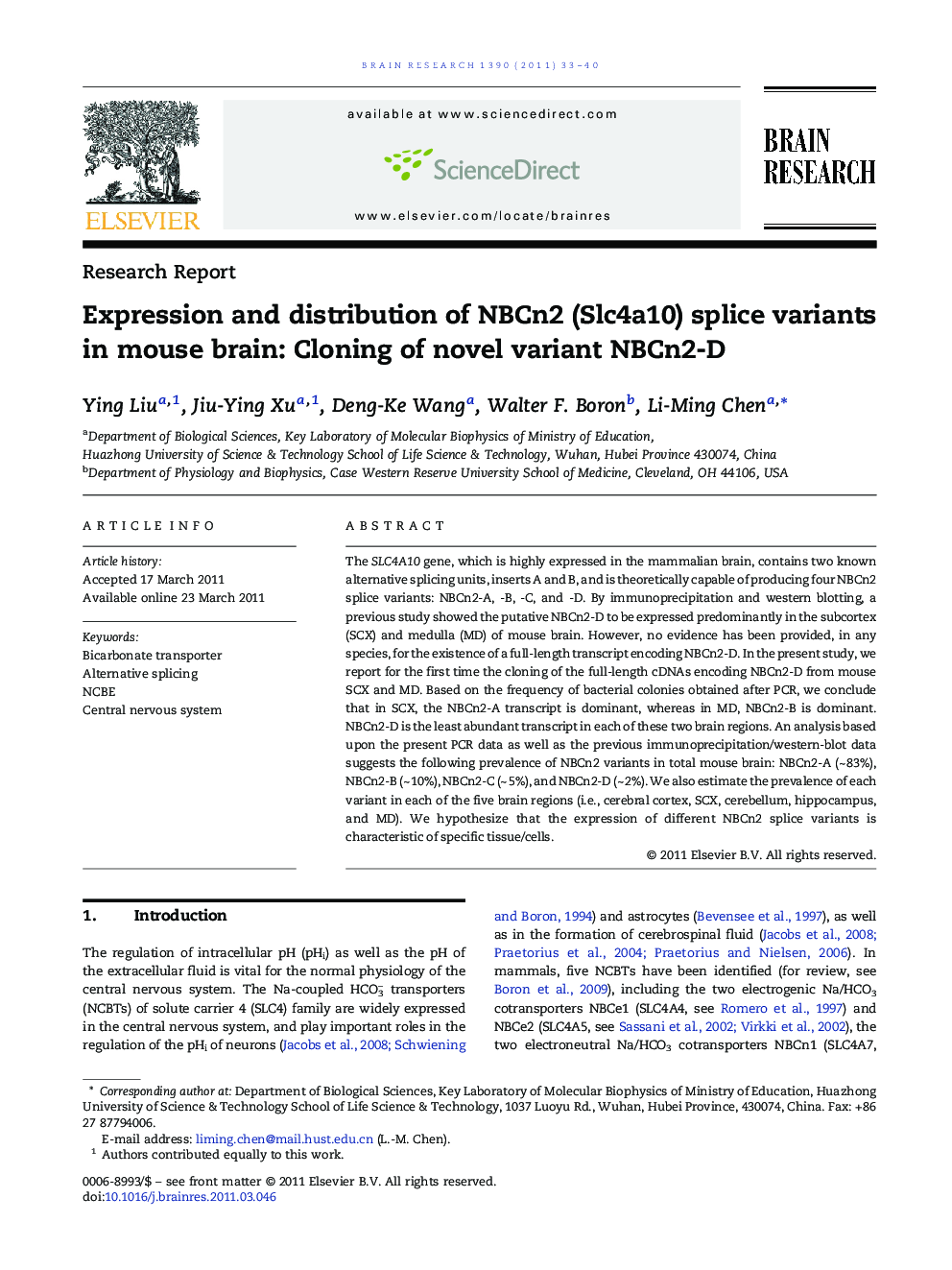| Article ID | Journal | Published Year | Pages | File Type |
|---|---|---|---|---|
| 4325890 | Brain Research | 2011 | 8 Pages |
The SLC4A10 gene, which is highly expressed in the mammalian brain, contains two known alternative splicing units, inserts A and B, and is theoretically capable of producing four NBCn2 splice variants: NBCn2-A, -B, -C, and -D. By immunoprecipitation and western blotting, a previous study showed the putative NBCn2-D to be expressed predominantly in the subcortex (SCX) and medulla (MD) of mouse brain. However, no evidence has been provided, in any species, for the existence of a full-length transcript encoding NBCn2-D. In the present study, we report for the first time the cloning of the full-length cDNAs encoding NBCn2-D from mouse SCX and MD. Based on the frequency of bacterial colonies obtained after PCR, we conclude that in SCX, the NBCn2-A transcript is dominant, whereas in MD, NBCn2-B is dominant. NBCn2-D is the least abundant transcript in each of these two brain regions. An analysis based upon the present PCR data as well as the previous immunoprecipitation/western-blot data suggests the following prevalence of NBCn2 variants in total mouse brain: NBCn2-A (~ 83%), NBCn2-B (~ 10%), NBCn2-C (~ 5%), and NBCn2-D (~ 2%). We also estimate the prevalence of each variant in each of the five brain regions (i.e., cerebral cortex, SCX, cerebellum, hippocampus, and MD). We hypothesize that the expression of different NBCn2 splice variants is characteristic of specific tissue/cells.
Research highlights► We cloned the cDNA a novel SLC4A10 variant NBCn2-D of any species. ► We estimated the prevalence of each NBCn2 variant in total mouse brain NBCn2. ► NBCn2-A is the most abundant, accounting for more than 80% of total brain NBCn2. ► The novel NBCn2-D is the least abundant, accounting for ~ 2% of total brain NBCn2.
